During mid-August 1996 and 1997, researchers Barbara Schroeder (National Marine Fisheries Service) and Dr. Llew Ehrhart (University of Central Florida), with the assistance of Dr. Ehrhart’s studentsattached satellite transmitters to the backs of five endangered green turtles that nested in the Archie Carr National Wildlife Refuge near Melbourne, Florida. The research was aimed at continuing to increase our knowledge of the principle foraging grounds and migratory routes used by Florida’s nesting population of green turtles.
Similar tracking experiments conducted in 1994, 1995 yielded exciting new information about where green turtles go after nesting on Florida’s east coast. See Results of 1994 & 1995 Migration-Tracking of Florida Green Turtles for more details.
 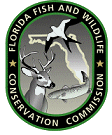 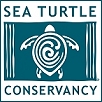 |
Thanks to Dean Bagley of the UCF Marine Turtle Research Group for providing the tagging history on all of the satellite tagged turtles. Marine Turtle Research Program under the direction of Dr.Llew Ehrhart.
Click on the turtle’s name to see a map of its movements.
Turtles tagged in 1997
FLO-JO – The first turtle tagged with a satellite transmitter in 1997 was encountered nesting at Melbourne Beach on August 21. However, this turtle, named Flo-Jo, is not new to us. We encountered her nesting in 1995, and, at that time, we put her first satellite transmitter on her. When she returned this year, her transmitter was no longer present (they are designed to fall off harmlessly), however, we were able to recognize her because she had a small tag in her flipper (the most common way of tagging sea turtles). To our knowledge, this is the first time that a sea turtle has been re-tagged, with a satellite transmitter, during different nesting seasons. It is exciting because we will hope to learn whether or not she returns to the same location that she migrated to in 1995.
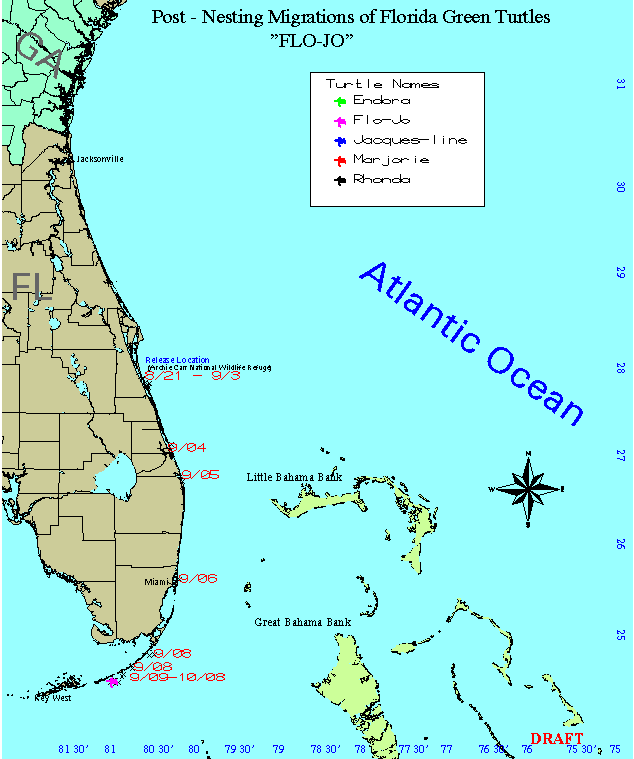
ENDORA – The second turtle selected for this year’s study, named Endora, laid a clutch of 88 eggs on August 22, 1997. Her satellite tag was applied at that time. She had not been observed nesting at Melbourne Beach prior to this date, however, not all of the green turtles that nest in this area are encountered each year. It is possible that she was a re-migrant (a turtle returning in a subsequent year to nest) but it is also possible that this was her first nesting season. Endora is the smallest of the five green turtles selected for our research, she measures 95.3cm in carapace (shell) length.
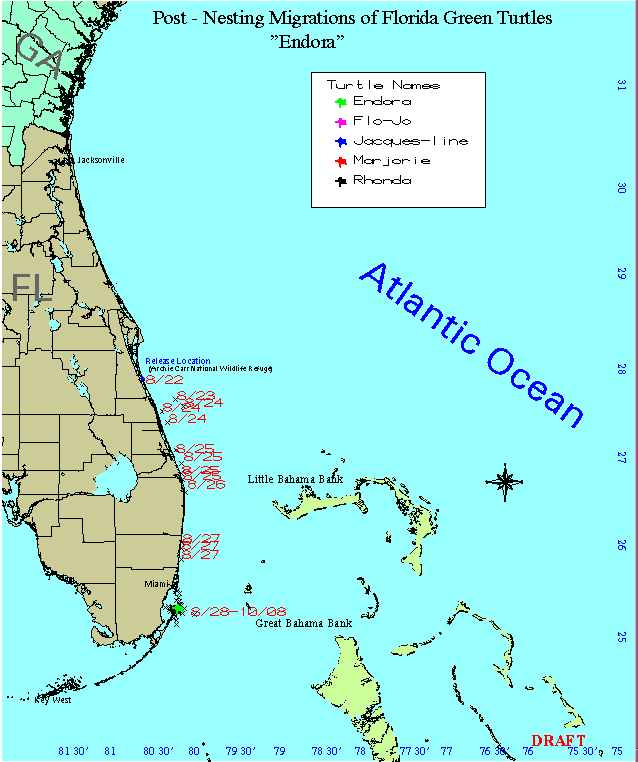
MARJORIE – Marjorie is an old friend. She was first observed by the UCF Marine Turtle Research Group in 1991, then again in 1993, and, in 1997, she was observed nesting three times. Her satellite tag was applied on August 23, after she laid a clutch of 140 eggs. Marjorie measures 102.6cm in carapace (shell) length.
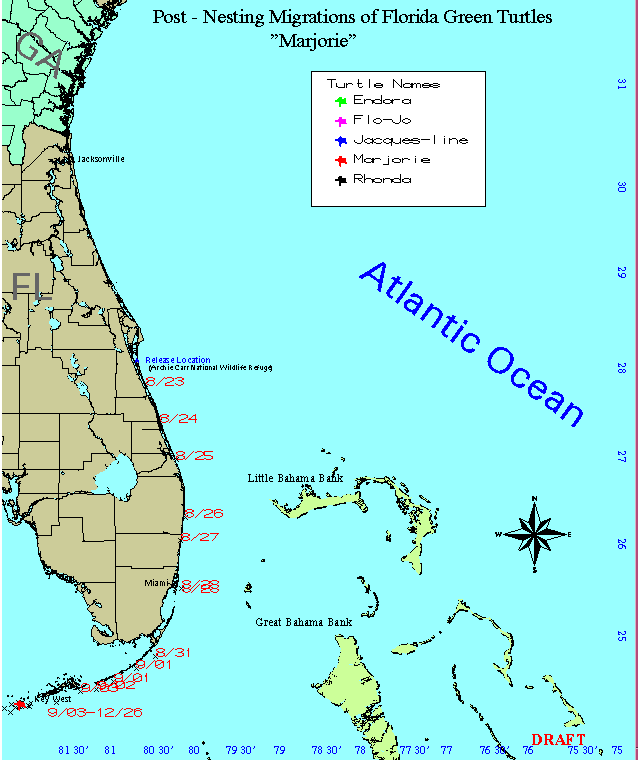
JACQUES-LINE – Jacques-line was first observed nesting at Melbourne Beach in 1992, she was seen twice that summer. She re-migrated in 1994 when she was observed four times. She was first observed in 1997 on August 13 and was discovered again on August 24, at which time we attached the satellite transmitter. She laid a clutch of 92 eggs. Jacques-line measures 96.3cm in carapace (shell) length.
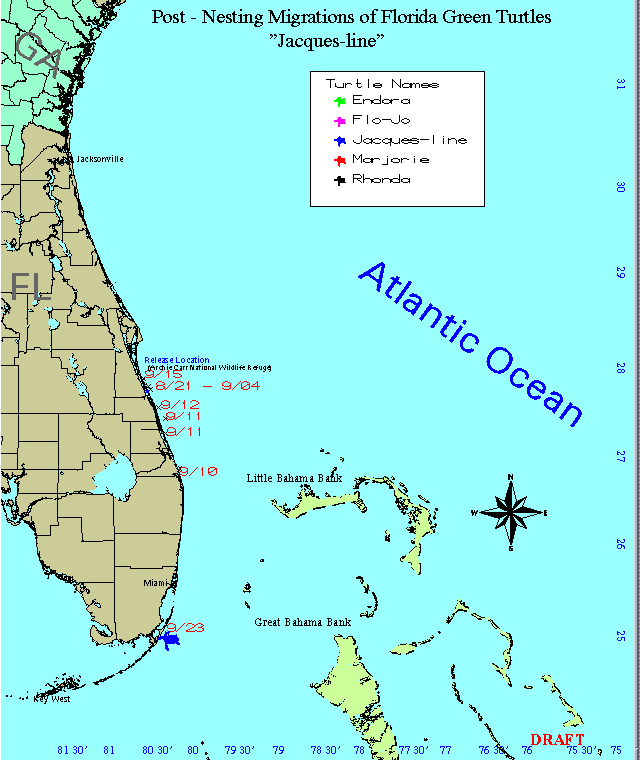
RHONDA – Rhonda is the turtle with the longest known history of this year’s satellite tagged turtles. She was first observed by the UCF Marine Turtle Research Group in 1987. However, at that time, she already carried a flipper tag from another group of researchers working in south Brevard County, and was likely tagged sometime in the early 1980’s. She was seen again by the UCF group in 1989, 1991, but not observed again until this year. We believe that she did return to the Archie Carr National Wildlife Refuge to nest in the intervening years, but was not observed. Rhonda measures 110cm in carapace (shell) length.
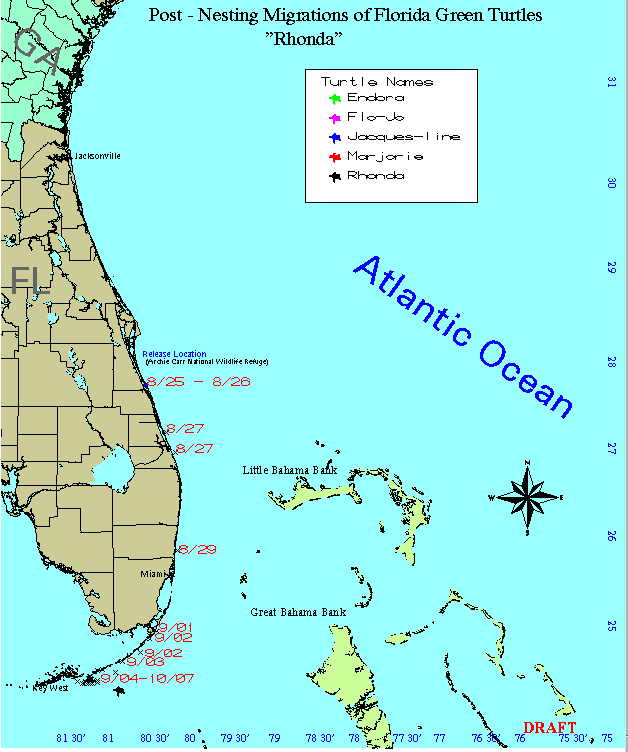
Funding for the 1997 Florida Green Turtle Satellite Tracking research was provided by the National Marine Fisheries Service. Maps were created by Andrea Mosier (Florida Fish & Wildlife Conservation Commission) and Barbara Schroeder (National Marine Fisheries Service).
Turtles tagged in 1996
SAM (Samantha) – The first nesting green turtle to receive a satellite transmitter in 1996 was first observed by the UCF marine turtle group in 1990. She was encountered nesting at Melbourne Beach on July 23, 1990 and she laid 164 eggs. The curved length of her shell is 117cm (46in) and her weight is estimated at 164 (362lb). “Sam” was encountered again as a re-migrant (a turtle nesting during a subsequent nesting season) in 1992. She laid 166 eggs on July 30, 1992 and, although we believe she nested several times that summer, she was not observed again. She re-migrated in 1994 and was encountered “false crawling” (an emergence that does not result in a nest) on July 17, 1994. In 1996, six years after we first encountered her, she once again traveled to South Brevard County and was observed nesting on August 14. The satellite transmitter was attached to her after she had completed nesting.
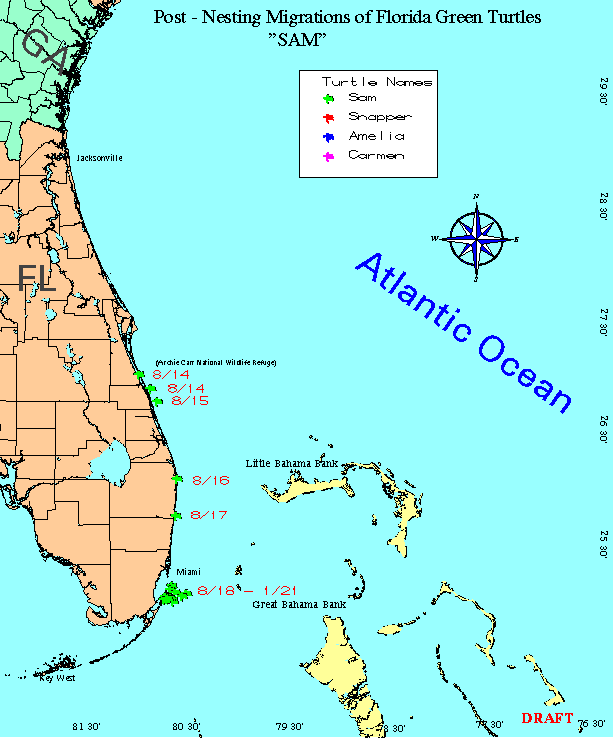
CARMEN – The second turtle selected for the 1996 migration study was first encountered “false crawling” at Melbourne Beach on 21 July 1994. Carmen measures 115cm (45in) along the curved length of her shell and her weight is estimated at 162kg (357 lb). She re-migrated in 1996 and was observed nesting on 21 August, she laid 145 eggs and the satellite transmitter was attached after she had completed nesting.
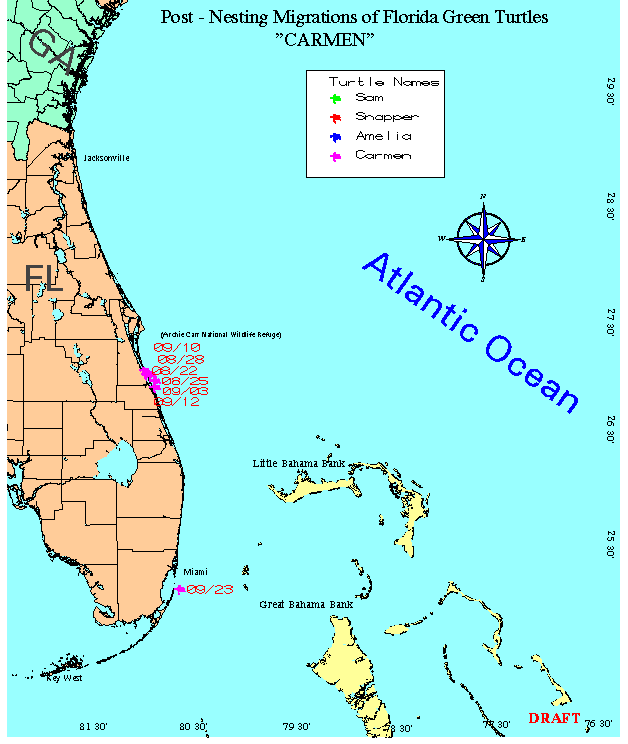
SNAPPER – This turtle was first observed at Melbourne Beach during the 1992 nesting season. She was seen by the research team five times that summer and was observed nesting on four of those sightings. The number of eggs in each of those four clutches was 121, 130, 113, and 143. Snapper measures 112cm (44in) in curved shell length and is estimated to weigh 145kg (320 lb). This turtle was not seen in 1994 (when she was expected back) however, not all green turtles are observed at Melbourne Beach and it is highly likely that she did re-migrate that year. She was encountered again on 23 August 1996 at which time the satellite transmitter was attached, following completion of nesting.
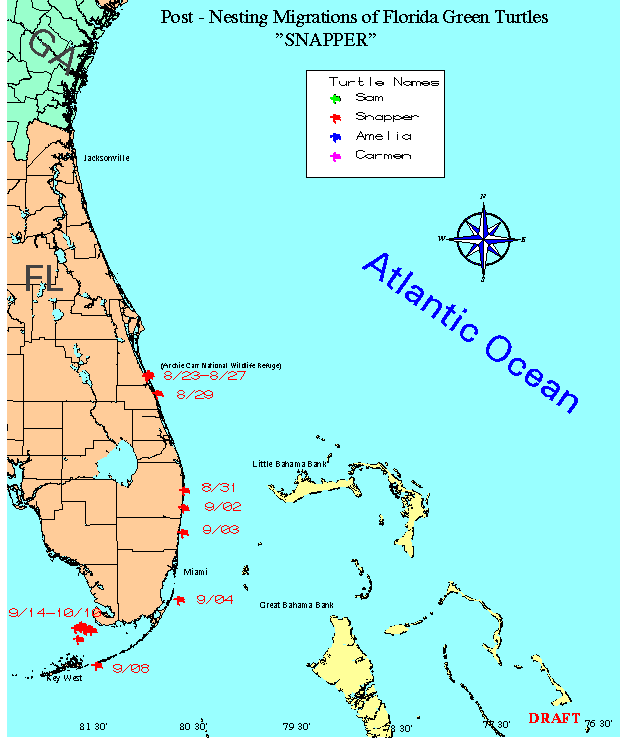
AMELIA – Amelia’s known nesting history at Melbourne Beach is very similar to Snapper’s. She was first encountered in 1992 and was observed nesting three times that summer. Amelia is the smallest of the four turtles in the satellite telemetry project this year. The curved length of her carapace is 105cm (41in) and she is estimated to weigh 129kg (285 lb). She was not observed nesting in 1994, but was seen again in 1996, first on 6 August and then again on 24 August, when the satellite transmitter was attached.
The Caribbean Conservation Corporation, with the help of our corporate sponsor Snapper, Inc., was a financial supporter of the 1996 satellite-tracking research project. Additional funding for the Sea Turtle Migration-Tracking Education Program was been provided by The Educational Foundation of America, the Geraldine R. Dodge Foundation and the Blue Planet Foundation. The Migration Tracking Education Program was also promoted to school teachers around the country by Turner Adventure Learning.